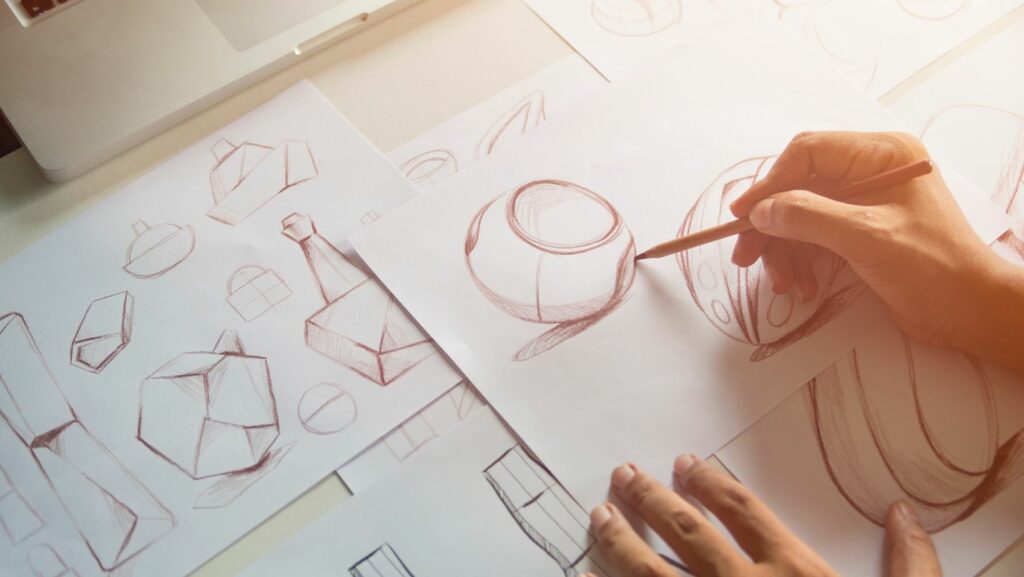In a world where consumers are bombarded with countless products, creative package design stands out as a crucial differentiator. It’s not just about protecting the contents inside; it’s about creating an unforgettable first impression that captures attention and communicates the brand’s essence. A well-designed package can make a product irresistible, driving both sales and brand loyalty.
Companies are increasingly investing in innovative packaging solutions to distinguish themselves in a crowded marketplace. From eco-friendly materials to interactive designs, the possibilities are endless. Creative package design isn’t merely an aesthetic choice—it’s a strategic tool that can elevate a brand’s identity and enhance the overall customer experience.
Creative Package Design
Creative package design significantly impacts consumer choices. Packaging serves as the first physical touchpoint between the product and potential buyers. A well-designed package grabs attention, communicates brand values, and differentiates the product from competitors.Effective packaging combines aesthetics and functionality. Visual appeal draws customers, while practical design ensures usability and protection. For instance, sleek, modern packaging for tech gadgets indicates innovation; in contrast, rustic, earthy packaging for organic products conveys natural qualities.

Brand identity is closely tied to packaging. Consistent design elements across products build a cohesive brand image. For example, Apple’s minimalist white boxes are instantly recognizable. This recognition fosters consumer trust and loyalty.Innovative materials and designs offer additional advantages. Sustainable packaging solutions, such as biodegradable plastics, appeal to eco-conscious consumers. Interactive packaging, like QR codes, engages customers and provides additional product information or promotions.
Creative packaging also enhances the unboxing experience. Unique designs create excitement and anticipation, contributing to positive word-of-mouth. Unboxing videos on social media can amplify this effect, reaching broader audiences.In essence, creative package design is a crucial marketing tool. It influences purchase decisions, reinforces brand identity, and enhances overall customer experience.
Key Elements Of Successful Package Design

Successful package design captivates consumers and conveys a brand’s message effectively. Below are crucial elements that contribute to its success.
Visual appeal plays a vital role in attracting customers. Color schemes and typography, such as bold reds and playful fonts, create an immediate impression. High-quality images and impactful graphics, like product photos and striking logos, enhance visibility on crowded shelves. Visual harmony, balancing elements like icons and text, ensures that packaging looks cohesive and professional.
Functionality
Functionality ensures that packaging is practical and user-friendly. Easy-open features, such as tear strips and resealable closures, improve usability. Durability, provided by sturdy materials like corrugated cardboard, protects contents during transport. Ergonomic design, including handles and appropriate dimensions, makes the product easy to handle and store.
Sustainability
Sustainability addresses growing consumer demand for eco-friendly options. Biodegradable materials, such as plant-based plastics, reduce environmental impact. Recyclable packaging, marked with clear recycling instructions, encourages responsible disposal. Minimalist designs, utilizing less material without compromising protection, demonstrate an eco-conscious approach.
Trends In Creative Package Design
Creative package design continually evolves, embracing new trends that reflect consumer preferences and technological advancements. Notable trends include minimalism, eco-friendly materials, and smart packaging.
Minimalist design focuses on simplicity, using fewer elements to convey the brand message effectively. Clear typography and straightforward graphics dominate minimalist packages, avoiding unnecessary embellishments. Companies seeking to highlight product quality and transparency use minimalist designs to communicate trustworthiness and elegance. Popular brands, like Apple and Muji, have successfully employed this trend.
Eco-Friendly Materials
Eco-friendly materials address the growing consumer demand for sustainability. Brands incorporate biodegradable plastics, recycled paper, and compostable materials into their packaging to reduce environmental impact. This trend aligns with both eco-conscious objectives and regulatory requirements. For instance, Lush Cosmetics utilizes biodegradable materials in their packaging, reflecting their commitment to environmental sustainability.
Smart Packaging
Smart packaging leverages technology to enhance customer engagement and product functionality. QR codes and NFC (near-field communication) tags provide interactive experiences, such as augmented reality (AR) content, product information, and promotional offers. Additionally, smart packaging can monitor product condition through sensors, ensuring quality during transportation. Beverage brands like Heineken and Coca-Cola have implemented smart packaging to engage consumers and deliver innovative solutions.


